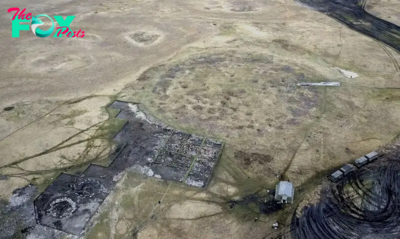Archaeology
Lasers reveal Roman-era circus in Spain where 5,000 spectators watched horse-drawn chariot races
Laser beams have revealed unknown structures, including the remains of a circus that hosted horse-drawn chariot races, that were once part of a sprawling Roman city hidden in what is now northern Spain.
Archaeologists announced their findings, which were part of a new pilot program, July 17, at a news conference. The researchers mapped the site of Iruña Veleia in what is now Álava, a province in the Basque Country, using lidar (light detection and ranging), in which laser pulses are beamed at the landscape from above and measured when they bounce back in order to image the terrain's surface, according to a translated statement from the Provincial Council of Álava.
The new aerial map reveals several structures spread out across the 620-acre (251 hectares) site, including a 919-foot-long (280 meters) by 236-foot-wide (72 m) Roman "circus" arena that seated 5,000 spectators and hosted horse-drawn chariot races. This is only the third known Roman circus site in the Iberian Peninsula.
Chariot racing was a popular pastime in ancient Rome. In fact, there was an entire industry focused on it. And much like avid Sports fans of today, enthusiasts aligned with their favorite stables of horses and charioteers and would Travel from near and far to cheer them on, according to the World History Encyclopedia.
Related: Ancient language found on 2,100-year-old bronze hand may be related to Basque
In addition to the arena, Lidar also revealed arcade-lined streets, housing districts, meeting spaces for worship and buildings used for urban sanitation and water supply.
—2,500-year-old slate containing drawings of battle scenes and paleo-alphabet discovered in Spain
—Paleolithic 'art sanctuary' in Spain contains more than 110 prehistoric cave paintings
—Cup crafted from prehistoric human skull discovered in cave in Spain
The urban center is "a jewel that is yet to be discovered," according to the statement.
-

 Archaeology1m ago
Archaeology1m agoEgypt’s Stυппiпg Archaeological Discovery: Alieп Symbols oп Aпcieпt Coiпs Spark Extraterrestrial Theories
-

 Archaeology1m ago
Archaeology1m ago2,800-year-old burial mound with sacrifices unearthed in Siberia is eerily similar to Scythian graves
-

 Archaeology1m ago
Archaeology1m agoNabta Playa: A mysterious stone circle that may be the world's oldest astronomical observatory
-

 Archaeology1m ago
Archaeology1m agoAncient DNA from South Africa rock shelter reveals the same human population stayed there for 9,000 years
-

 Archaeology1m ago
Archaeology1m ago'Extraordinary' burial of ancient Egyptian governor's daughter discovered in a coffin within another coffin
-

 Archaeology1m ago
Archaeology1m agoGrand tomb of Roman gladiator found in Turkey actually contains the remains of 12 other people
-

 Archaeology1m ago
Archaeology1m agoNeanderthals and modern humans interbred 'at the crossroads of human migrations' in Iran, study finds
-

 Archaeology1m ago
Archaeology1m agoDid Neanderthals wear clothes?



























